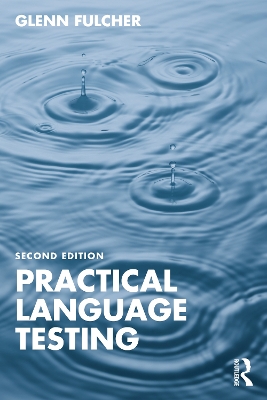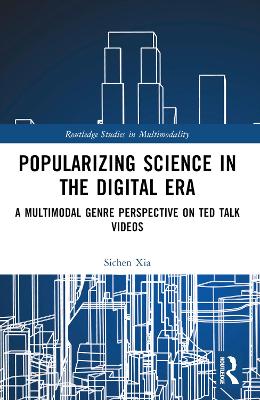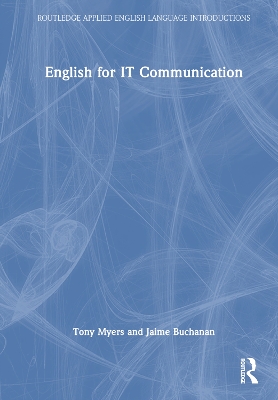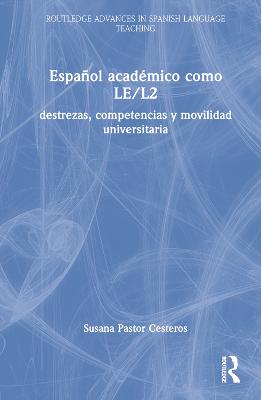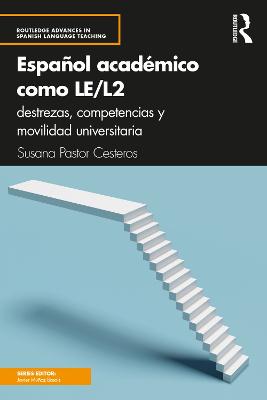Practical Language Testing
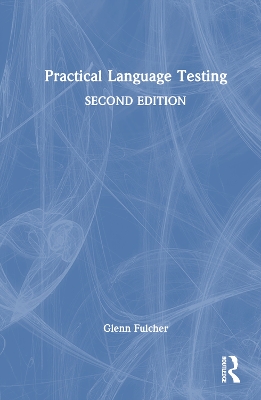 portes grátis
portes grátis
Practical Language Testing
Fulcher, Glenn
Taylor & Francis Ltd
11/2024
344
Dura
9781032447292
Pré-lançamento - envio 15 a 20 dias após a sua edição
Descrição não disponível.
Acknowledgements
Preface
Chapter 1 - Testing and assessment in context
1. Test purpose
2. Tests in educational systems
3. Testing rituals
4. Unintended consequences
5. Testing and society
6. Historical interlude I
7. The politics of language testing
8. Historical interlude II
9. Professionalising language education and testing
10. Validity
Activities
Chapter 2 - Standardised testing
1. Two paradigms
2. Testing as science
3. What's in a curve?
4. The curve and score meaning
5. Putting it into practice
6. Test scores in a consumer age
7. Testing the test
8. Introducing reliability
9. Calculating reliability
10. Living with uncertainty
11. Reliability and test length
12. Relationships with other measures
13. Measurement
Activities
Chapter 3 - Classroom assessment
1. Life at the chalk-face
2. Assessment for learning
3. Self- and peer-assessment
4. Dynamic assessment
5. Understanding change
6. Assessment and second language acquisition
7. Criterion-referenced testing
8. Dependability
9. Assessment literacy
Activities
Chapter 4 - Deciding what to test
1. The test design cycle
2. Construct definition
3. Where do constructs come from?
4. Models of communicative competence
5. From definition to design
Activities
Chapter 5 - Designing test specifications
1. What are test specifications?
2. Specifications for testing and teaching
3. A sample detailed specification for reading test
4. Granularity
5. Performance conditions
6. Target language use domain analysis
7. Accommodations
8. Back and forth
Activities
Chapter 6 - Evaluating, prototyping and piloting
1. Investigating usefulness and usability
2. Evaluating items, tasks and specifications
3. Guidelines for multiple-choice items
4. Prototyping
5. Piloting
6. Field testing
7. Item shells
8. Operational item review and pre-testing
Activities
Chapter 7 - Scoring language tests
1. Scoring items
2. Scorability
3. Scoring constructed response tasks
4. Automated scoring
5. Corrections for guessing
6. Avoiding own goals
Activities
Chapter 8 - Aligning tests to standards
1. It's as old as the hills
2. The definition of 'standards'
3. The uses of standards
4. Unintended consequences revisited
5. Using standards for harmonisation and identity
6. How many standards can we afford?
7. Performance level descriptors (PLDs) and test scores
8. Some initial decisions
9. Standards-setting methodologies
10. Evaluating standard-setting
11. Training
12. The special case of CEFR
13. You can always count on uncertainty
Activities
Chapter 9 - Validity
1. Preliminaries
2. The Messick consensus
3. Argument-based validation
4. Technicalism
5. The new realism
6. Constructivism
7. Pragmatic realism
8. Conclusion
Activities
Epilogue
Appendices
Glossary
References
Index
Preface
Chapter 1 - Testing and assessment in context
1. Test purpose
2. Tests in educational systems
3. Testing rituals
4. Unintended consequences
5. Testing and society
6. Historical interlude I
7. The politics of language testing
8. Historical interlude II
9. Professionalising language education and testing
10. Validity
Activities
Chapter 2 - Standardised testing
1. Two paradigms
2. Testing as science
3. What's in a curve?
4. The curve and score meaning
5. Putting it into practice
6. Test scores in a consumer age
7. Testing the test
8. Introducing reliability
9. Calculating reliability
10. Living with uncertainty
11. Reliability and test length
12. Relationships with other measures
13. Measurement
Activities
Chapter 3 - Classroom assessment
1. Life at the chalk-face
2. Assessment for learning
3. Self- and peer-assessment
4. Dynamic assessment
5. Understanding change
6. Assessment and second language acquisition
7. Criterion-referenced testing
8. Dependability
9. Assessment literacy
Activities
Chapter 4 - Deciding what to test
1. The test design cycle
2. Construct definition
3. Where do constructs come from?
4. Models of communicative competence
5. From definition to design
Activities
Chapter 5 - Designing test specifications
1. What are test specifications?
2. Specifications for testing and teaching
3. A sample detailed specification for reading test
4. Granularity
5. Performance conditions
6. Target language use domain analysis
7. Accommodations
8. Back and forth
Activities
Chapter 6 - Evaluating, prototyping and piloting
1. Investigating usefulness and usability
2. Evaluating items, tasks and specifications
3. Guidelines for multiple-choice items
4. Prototyping
5. Piloting
6. Field testing
7. Item shells
8. Operational item review and pre-testing
Activities
Chapter 7 - Scoring language tests
1. Scoring items
2. Scorability
3. Scoring constructed response tasks
4. Automated scoring
5. Corrections for guessing
6. Avoiding own goals
Activities
Chapter 8 - Aligning tests to standards
1. It's as old as the hills
2. The definition of 'standards'
3. The uses of standards
4. Unintended consequences revisited
5. Using standards for harmonisation and identity
6. How many standards can we afford?
7. Performance level descriptors (PLDs) and test scores
8. Some initial decisions
9. Standards-setting methodologies
10. Evaluating standard-setting
11. Training
12. The special case of CEFR
13. You can always count on uncertainty
Activities
Chapter 9 - Validity
1. Preliminaries
2. The Messick consensus
3. Argument-based validation
4. Technicalism
5. The new realism
6. Constructivism
7. Pragmatic realism
8. Conclusion
Activities
Epilogue
Appendices
Glossary
References
Index
Este título pertence ao(s) assunto(s) indicados(s). Para ver outros títulos clique no assunto desejado.
taker;cut;score;closed;response;item;criterion;referenced;multiple;choice
Acknowledgements
Preface
Chapter 1 - Testing and assessment in context
1. Test purpose
2. Tests in educational systems
3. Testing rituals
4. Unintended consequences
5. Testing and society
6. Historical interlude I
7. The politics of language testing
8. Historical interlude II
9. Professionalising language education and testing
10. Validity
Activities
Chapter 2 - Standardised testing
1. Two paradigms
2. Testing as science
3. What's in a curve?
4. The curve and score meaning
5. Putting it into practice
6. Test scores in a consumer age
7. Testing the test
8. Introducing reliability
9. Calculating reliability
10. Living with uncertainty
11. Reliability and test length
12. Relationships with other measures
13. Measurement
Activities
Chapter 3 - Classroom assessment
1. Life at the chalk-face
2. Assessment for learning
3. Self- and peer-assessment
4. Dynamic assessment
5. Understanding change
6. Assessment and second language acquisition
7. Criterion-referenced testing
8. Dependability
9. Assessment literacy
Activities
Chapter 4 - Deciding what to test
1. The test design cycle
2. Construct definition
3. Where do constructs come from?
4. Models of communicative competence
5. From definition to design
Activities
Chapter 5 - Designing test specifications
1. What are test specifications?
2. Specifications for testing and teaching
3. A sample detailed specification for reading test
4. Granularity
5. Performance conditions
6. Target language use domain analysis
7. Accommodations
8. Back and forth
Activities
Chapter 6 - Evaluating, prototyping and piloting
1. Investigating usefulness and usability
2. Evaluating items, tasks and specifications
3. Guidelines for multiple-choice items
4. Prototyping
5. Piloting
6. Field testing
7. Item shells
8. Operational item review and pre-testing
Activities
Chapter 7 - Scoring language tests
1. Scoring items
2. Scorability
3. Scoring constructed response tasks
4. Automated scoring
5. Corrections for guessing
6. Avoiding own goals
Activities
Chapter 8 - Aligning tests to standards
1. It's as old as the hills
2. The definition of 'standards'
3. The uses of standards
4. Unintended consequences revisited
5. Using standards for harmonisation and identity
6. How many standards can we afford?
7. Performance level descriptors (PLDs) and test scores
8. Some initial decisions
9. Standards-setting methodologies
10. Evaluating standard-setting
11. Training
12. The special case of CEFR
13. You can always count on uncertainty
Activities
Chapter 9 - Validity
1. Preliminaries
2. The Messick consensus
3. Argument-based validation
4. Technicalism
5. The new realism
6. Constructivism
7. Pragmatic realism
8. Conclusion
Activities
Epilogue
Appendices
Glossary
References
Index
Preface
Chapter 1 - Testing and assessment in context
1. Test purpose
2. Tests in educational systems
3. Testing rituals
4. Unintended consequences
5. Testing and society
6. Historical interlude I
7. The politics of language testing
8. Historical interlude II
9. Professionalising language education and testing
10. Validity
Activities
Chapter 2 - Standardised testing
1. Two paradigms
2. Testing as science
3. What's in a curve?
4. The curve and score meaning
5. Putting it into practice
6. Test scores in a consumer age
7. Testing the test
8. Introducing reliability
9. Calculating reliability
10. Living with uncertainty
11. Reliability and test length
12. Relationships with other measures
13. Measurement
Activities
Chapter 3 - Classroom assessment
1. Life at the chalk-face
2. Assessment for learning
3. Self- and peer-assessment
4. Dynamic assessment
5. Understanding change
6. Assessment and second language acquisition
7. Criterion-referenced testing
8. Dependability
9. Assessment literacy
Activities
Chapter 4 - Deciding what to test
1. The test design cycle
2. Construct definition
3. Where do constructs come from?
4. Models of communicative competence
5. From definition to design
Activities
Chapter 5 - Designing test specifications
1. What are test specifications?
2. Specifications for testing and teaching
3. A sample detailed specification for reading test
4. Granularity
5. Performance conditions
6. Target language use domain analysis
7. Accommodations
8. Back and forth
Activities
Chapter 6 - Evaluating, prototyping and piloting
1. Investigating usefulness and usability
2. Evaluating items, tasks and specifications
3. Guidelines for multiple-choice items
4. Prototyping
5. Piloting
6. Field testing
7. Item shells
8. Operational item review and pre-testing
Activities
Chapter 7 - Scoring language tests
1. Scoring items
2. Scorability
3. Scoring constructed response tasks
4. Automated scoring
5. Corrections for guessing
6. Avoiding own goals
Activities
Chapter 8 - Aligning tests to standards
1. It's as old as the hills
2. The definition of 'standards'
3. The uses of standards
4. Unintended consequences revisited
5. Using standards for harmonisation and identity
6. How many standards can we afford?
7. Performance level descriptors (PLDs) and test scores
8. Some initial decisions
9. Standards-setting methodologies
10. Evaluating standard-setting
11. Training
12. The special case of CEFR
13. You can always count on uncertainty
Activities
Chapter 9 - Validity
1. Preliminaries
2. The Messick consensus
3. Argument-based validation
4. Technicalism
5. The new realism
6. Constructivism
7. Pragmatic realism
8. Conclusion
Activities
Epilogue
Appendices
Glossary
References
Index
Este título pertence ao(s) assunto(s) indicados(s). Para ver outros títulos clique no assunto desejado.

